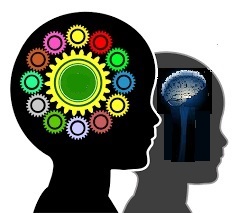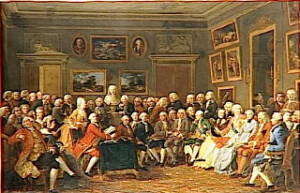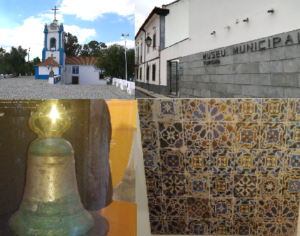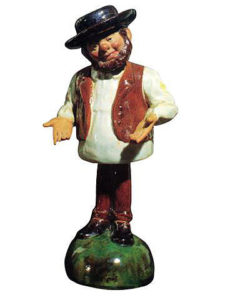
Arquivo para a ‘Linguagens’ Categoria
Possible and impossible changes
At other times, the proportions, the changes that occurred in previous stages, also caused a strong impression on the people, but the most influential disruptive technologies, glasses and telescopes, allowed the first printed books to be read, and thanks to the telescopes, the Copernican revolution took place.
impression on the people, but the most influential disruptive technologies, glasses and telescopes, allowed the first printed books to be read, and thanks to the telescopes, the Copernican revolution took place.
The change of paradigms that happens causes astonishment, but what needs to be done in fact, what is possible in a more distant reality and what can happen in the next years, I already indicated in some post, The “Physics of the impossible”, by Michio Kaku (2008).
The author quotes Einstein’s phrase at the beginning of this book: “If an idea does not seem absurd at first, then it will not have any future,” it takes a strong and shocking thought like this to understand that if we should bet on innovation, is the historical moment of this, you must understand that most disruptive things will initially be absurd.
Speaking of more distant things, at the beginning of the microcomputers, it was stated that they would not be useful to many people, the mouse was clumsy and “little anatomical” when it appeared, and there is still a lot of distrust in “artificial intelligence”, not only between laypeople on the subject, among scholars as well, others idealize an “electronic brain”, but neither Sophia (the first robot to have citizenship) and Alexa Amazon really has “intelligence.”
What has to be stopped, and this in Copernicus’s time was worth for the theocentric vision, today there is also an anti-technology sociopathy that borders on fundamentalism, if there are injustices and inequalities they must be combated on the plane in which they are in the social and political.
Roland Barthes said that every denial of language “is a death”, with the adoption of technology by millions of people this death becomes a conflict, first between generations, and then between different conceptions of development and education.
To the scholars I make the recommendation of Heidegger, affirmed on the radio and the television that only half a dozen people understood the process and of course with the financial power can control the publishings of these medias, but also one can answer in the religious field.
The reading of the evangelist Mark, Mc 16,17-18 “The signs that will accompany those who believe will be these: they will cast out demons in my name, they will speak new tongues; If they take snakes or drink any deadly poison, it will not hurt them; when they lay their hands on the sick, they shall be healed. ”
This needs to be updated for the new interpretations of this bible text.
KAKU, M. (2008) The Physics of the Impossible: a scientific exploration of the world of fasers, force fields, teleportation, and time travel. NY: Doubleday.
Trends in Artificial Intelligence
By the late 1980s the promises and challenges of artificial intelligence seemed to crumble Hans Moracev’s  phrase: “It is easy to make computers display adult-level performance on intelligence tests or play checkers, and it is difficult or impossible to give them the one-year-old’s abilities when it comes to perception and mobility, “in his 1988 book” MInd Children. ”
phrase: “It is easy to make computers display adult-level performance on intelligence tests or play checkers, and it is difficult or impossible to give them the one-year-old’s abilities when it comes to perception and mobility, “in his 1988 book” MInd Children. ”
Also one of the greatest precursors of AI (Artificial Intelligence) Marvin Minsky and co-founder of the Laboratory of Artificial Intelligence, declared in the late 90s: “The history of AI is funny, because the first real deeds were beautiful things, a machine that made demonstrations in logic and did well in the course of calculation. But then, trying to make machines capable of answering questions about simple historical, machine … 1st. year of basic education. Today there is no machine that can achieve this. “(KAKU, 2001, p 131)
Minsky, along with another AI forerunner: Seymor Papert, came to glimpse a theory of The Society of Mind, which sought to explain how what we call intelligence could be a product of the interaction of non-intelligent parts, but the path of AI would be the other, both died in the year 2016 seeing the turn of the AI, without seeing the “society of the mind” emerge.
Thanks to a demand from the nascent Web whose data lacked “meaning,” AI’s work will join the efforts of Web designers to develop the so-called Semantic Web.
There were already devices softbots, or simply bots, software robots that navigated the raw data looking for “to capture some information,” in practice were scripts written for the Web or the Internet, which could now have a nobler function than stealing data.
The idea of intelligent agents has been revived, coming from fragments of code, it has a different function on the Web, that of tracking semi-structured data, storing them in differentiated databases, which are no longer Structured Query Language (SQL) but look for questions within the questions and answers that are made on the Web, then these banks are called No-SQL, and they will also serve as a basis for Big-Data.
The emerging challenge now is to build taxonomies and ontologies with this scattered, semi-structured Web information that is not always responding to a well-crafted questionnaire or logical reasoning within a clear formal construction.
In this context the linked data emerged, the idea of linking data of the resources in the Web, investigating them within the URI (Uniform Resource Identifier) that are the records and location of data in the Web.
The disturbing scenario in the late 1990s had a semantic turn in the 2000’s.
KAKU, M. (2008) The Physics of the Impossible: a scientific exploration of the world of fasers, force fields, teleportation, and time travel. NY: Doubleday.
Clarify the clearing
Man always wanted the light, he always went in  search of the “clearing”, the Myth of the Cave of Plato is nothing else, the light in the medieval chapels and arts, the clarification (Aufklärung) that Kant pointed out as the man’s exit from his minority and the current “clearings” of Heidegger and “clarifying” Sloterdijk glades, the plural is on my own.
search of the “clearing”, the Myth of the Cave of Plato is nothing else, the light in the medieval chapels and arts, the clarification (Aufklärung) that Kant pointed out as the man’s exit from his minority and the current “clearings” of Heidegger and “clarifying” Sloterdijk glades, the plural is on my own.
In medieval art the “light” must be associated with art, although the texts of Boethius, Thomas Aquinas, Averrois and many others are worthy of reading and analysis, it was in the arts that the idea of luminosity was more present, an example, is the church Saint-Chapelle (photo) consecrated in 1248 AD, with example of the dematerialization of the walls and substitution by stained glass.
What should be the exercise of full freedom, the great bet of modernity, actually confined humanism to a dead end, enough to ask the question if we live in an enlightened age, opinions of all philosophical nuances will answer: it is not an enlightened time, so the pretense of enlightenment gave blindness and civilization crisis.
Heidegger’s answers about the “clearing” in the midst of this forest of questions (some think it is only information) was the resumption of being, certainly important, but Sloterdijk’s response to the letters on humanism puts it in question: that is “clearing.”
I do not have a definitive answer, as Sloterdijk is not, even if he points “the spheres” as the circles of imprisonment of being, of thought and I would say here, even religion.
My response contemplates Byung-Chul Han’s book “Expulsion from the Other,” the option for a massified, uniformed society and for that without values would destroy the human wealth of diversity, but it is precisely this diversity that seems to rebel, and may give fruits. Clarifying the clearing, in the face of the civilizing crisis of our time, can not find more answer, as in the past, in the idea of single thinking, diversity is now necessary.
The century of the Kantian lights
The eighteenth century was celebrated by many philosophers as a century of Philosophy, it seemed that the Enlightenment had triumphed irreversibly, its idea of state, science as a way to remove man from darkness, at last everything seemed to go from strength to strength. First of all what was clarification for Kant, no doubt the greatest precursor, as Hegel was the synthesis of all idealistic philosophy of the Enlightenment.
as a century of Philosophy, it seemed that the Enlightenment had triumphed irreversibly, its idea of state, science as a way to remove man from darkness, at last everything seemed to go from strength to strength. First of all what was clarification for Kant, no doubt the greatest precursor, as Hegel was the synthesis of all idealistic philosophy of the Enlightenment.
Clarification (Aufklarung) would be the departure of man from his minority, of which he himself would be guilty, see that guilt here is not the Christian concept of deviation, but that of which the state would be the guardian.
So the minority is the inability to make use of his understanding without the direction of another individual, it is the perfect individualism, the man without the direction of any other individual, therefore only he is guilty of this “minority”, to depend on the other.
This is accomplished in the maxim of the categorical imperative: “he acts in such a way that his action can be universal”, and should not be confused with the golden rule: “do to others what you would like done to you”, because this includes the Other.
The idea that idealism has a golden thread leading to Platonism, which in turn can not be isolated from Aristotle’s “materialism”, is also mistaken in Gadamer: “The problem of historical consciousness,” whose The central point is precisely to separate idealistic and romantic consciousness from history, to reality.
The text of Plato’s Seventh Letter favors dialogue with the Other, the dialectical dialectic of facing opposites and knowing how to complete the so-called hermeneutical circle, where preconceptions can pass through a fusion of horizons and a later enlightenment that leads to new reformulation. Plato affirms in the Seventh Letter: “… only after rubbing so to speak, in each other, …. in these friendly colloquies of questions and answers … is that wisdom and understanding shine on each object … “(Plato 344 b-c).
For Gadamer, the Hermeneutic Circle, a true method of philosophizing, is a-Latvian, for: “Whatever Insight we may possess emerges in a finite human discourse, and therefore only partially … Our insights, in other words, are marked by our discursiveness. What is given to us is given from the concealment [léthe] and in a lapse of time back to it. Hence our human truth is a-letheia, never absolute. ” (GADAMER, 1980, pp. 103-104)
PLATO, Letter VII (Trad. Of the Greek and notes of Jose Trindade Santos and Juvino Maia Jr). Rio de Janeiro: PUC-Rio / Loyola, 2008.
GADAMER, H.G. Dialogue and Dialectic, eight hermeneutical studies on Plato, Binghamton, NY: Yale University, 1980, p. 91-123.
Life: origin and destiny
To exist life is essential water and some other elements in abundance: oxygen, carbon, hydrogen, nitrogen, calcium, phosphorus, sulfur, potassium, sodium, chlorine and magnesium, so the search for inhabited or inhabited planets, scientist Arthur C. Clarke said, “Whether we’re alone in the universe or we’re not, either scenario is scary.”
in abundance: oxygen, carbon, hydrogen, nitrogen, calcium, phosphorus, sulfur, potassium, sodium, chlorine and magnesium, so the search for inhabited or inhabited planets, scientist Arthur C. Clarke said, “Whether we’re alone in the universe or we’re not, either scenario is scary.”
As important as the origin of life, which is still an enigma, is to investigate the original societies that are submerged in the underground layers of our society, some are able to see these traits and understand that modernity is not the eternal destiny of men, others immersed in the conflicts of our time want to eternalize it as if it were the last human civilizing stage.
To understand what life is, it is also to understand where we came from, whether in the scientistic perspective of modernity we have to know whether we come from matter or not, and for this question I recommend Terrence Deacon’s book “Incomplete Nature: how mind emerged fom matter” (see our post), precisely because it unites the anthropological perspective with the cosmological word, in a broader sense that includes the cosmogonies of the diverse cultures and civilizations.
The subject is too broad for a post, so I tell an experience being in Portugal, I went to visit one of these small Portuguese towns Coruche, it is not the villages that are even smaller, and there I came across vestiges of the prehistoric men in the region, the first signs of Western civilization: Roman columns, the one believed to be the first bell of Portugal and also the beginning of Christian evangelization in the region, the Church of Our Lady of the Castle has this name because it was made on the ruins of a castle.
So one civilization buries the other, the city also lies in a border region between the Kingdom of Portugal and that of Al-Andaluz, where Arab Muslims lived and where the origin of the Portuguese tile designs is.
I felt that all this was composed in a civilization originating from unknown Portugal, and we grandchildren of this original civilization. It does not fail to have, as in all Portugal the fields of vines, almost every place has one. As it is written in the museum of Coruche on the city: “The sky, the earth and the men”.
About the essence of life
What is finite or temporary is entity, but everything that exists has not always existed, then it is entity.
always existed, then it is entity.
We do not speak of essence without speaking of Being, for the essence without e-sistance is a being for Nothing, the nihilism that has already explored a little, now we go to this existence, finite in the now, but ephemeral because in a second she it will only be a fleeting “memory”.
We assume as Camus, who are only beings, the myth of Sifico to push the stone of life while in this life that is finite and absurd, but that does not admit not being.
As beings, always finite, it is inevitable that we move only in the plane of the beings, that is, only of what it always is, avoiding as far as possible the virtual “being”.
It seems sensible and rational to be only in what is, but also when in the movements for a greater understanding of the Being, if it is not, by the logic of the essences, it is nihilism, since starting only from the plane of the is, everything that is not is nothing, falling and falling on the plane of nihilism.
It is possible, remaining on this plane of existence to find meaning for life and also reap the fruits of a look at the infinite within the existential plane, a film seen in my youth marked me.
Akira Kurosawa Living’s film (Ikiru, 1952), an icon of his still little-known work, tells of a bureaucrat from a public office who discovers stomach cancer and lives the drama of rethinking his life, finds out in ladies who were going to complain of the mud in a peripheral neighborhood a reason for its existence.
Before dying the public servant of a miserable existence discovers in the complaint of those ladies a meaning for their existence and will fight with all the forces to create a park for children where before it was a mall, where he will die on a cold winter day in a chair of swing that square.
It is possible to be as a person, although it is necessary to reach some transcendent objective, to discover in fact what life is, when I went to see the film I thought to myself: I think now Kurosawa will fall into my concept, for me it will always be a myth of cinema not Japanese, but universal.
I also remember that today is the Day of the Carnation Revolution in Portugal, which overthrew fascism.
Abandonment in the literature
The subject seems hidden in the literature, but it is not, I began to read  the author’s Abandon trilogy Meg Cabot because there was reference to the myths of Hades and Persephone.
the author’s Abandon trilogy Meg Cabot because there was reference to the myths of Hades and Persephone.
But the climate of excessive suspense, in my view of course, made me uninterested in the book and unlike many others that I return to and understand the author’s purpose, in this I did not do it. For those who do not know the mythology Persephone is Zeus’s daughter with Demeter, was a goddess concerned with picking flowers, and gradually when he grew up he enchanted the god Hades, lord of the dead who asked his daughter to marry him, but Demeter did not want them to get married .
They end up getting married, but Demeter asks Zeus to bring her back at the end of a complicated plot, Persephone ends up with a period with Hades, which is winter on Olympus, and a period with Demeter, which is spring in the realm of Greek gods. Anyway, the trilogy does not seem to me at the beginning any of this, it was just a “cult” touch.
Another more realistic book caught my attention, I find the Italian author Elena Ferrante, who has been writing since January in The Guardian, about family, childhood, gender and aging.
While I was waiting for a friend in a bookstore in Lisbon, I began to leaf through the book “Days of Abandonment” by Elena Ferrante, which tells the story (I do not know if it is true) of Olga, who is abandoned by Mario and finds herself trapped in a shattered daily life with two children, a dog and no job, but will fight against the feeling of a poor abandoned woman. I did not go to the end, of course, and I did not buy the book to resist the temptation to deviate from my compulsory readings, which at this moment are many and the pile is huge, I quickly saw on the Internet that 90% of the people who read it liked it.
Your book “A genial friend” is going to the TVs, in Portugal there will be a series.
See and believe: feeling the real
Contrary to common sense thinking, the virtual does not oppose the real, but it points to a path, digital technologies already under development as augmented reality, virtual reality and holograms are virtual not in the sense of unreality, but of potentialities. What may come out of them still depends on some technological advances, but the development of these artifacts, such as to create 3D holograms tested at Brigham Young
the real, but it points to a path, digital technologies already under development as augmented reality, virtual reality and holograms are virtual not in the sense of unreality, but of potentialities. What may come out of them still depends on some technological advances, but the development of these artifacts, such as to create 3D holograms tested at Brigham Young
Researchers of Bringham Young University (see our post) published in the January issue of Nature, will still depend on technological advances to market in the near future, this is its virtuality. In an information society, reading plays a central role, not incidentally it is linked to the printed artifact, the so-called Gutenberg Galaxy, however one can imagine that oral culture has little to do with it, or only compose with it , but this is not a fact.
Oral culture, seeing is linked to listening, may seem curious or strange in this culture is essential to listen, and speaking means a certain authority, were thus with the oracles, prophets and masters in Afro cultures, one must have the gift to tell in them the myths occupy a prominent place, that is why we develop here: seeing they do not see, and hearing they do not listen. It might be the opposite, if we think of photography, TV and the Cinema, but the so-called “society of the spectacle”, which Guy Debord defined the spectacle as the set of social relations mediated by the images, but these are only modern artifacts; cave paintings would then be what?
The line of analysis that although it criticizes seems more coherent is that of Paul Virilio, that the modern society walks with “speed” for the new media, and the dance and the theater would be the real resistances to this speed, But Virilio surrenders to the claim that technological innovations transform, modify, alter geographical space at all scales (local, national and global), does not say this, however, it is necessary to humanize them, and this process will be increasingly is inherent in these media. An example of oral culture is in Thomas’s famous passage, which is interpreted in the culture of information as saying that it is seeing to believe, it is wrong, it is to feel to believe, reread the passage of John 20: 25-27.
“Then the other disciples told him,” We have seen the Lord. “But Thomas said to them,” If I do not see the nail-mark in your hands, if I do not put my finger on the nail-marks, your side, I will not believe “…. and Jesus said, Put your finger here and look at my hands.”
Jesus appeared and asked that he also touch other passages Jesus appears and only when he speaks, and breaks bread is “seen,” modern man must touch and feel.
Seeing do not see
Listening already wrote here, is the fact of owning the hearing aid, listening is something for mental processing. what you have heard, you can not do it without some attention and some knowledge, at least of the language in which you are listening.
listening is something for mental processing. what you have heard, you can not do it without some attention and some knowledge, at least of the language in which you are listening.
I imagined in Portugal, that in all the Iberian Peninsula, had already seen in Spain, there is some culture linked to the vision, something similar to oral tradition, even more primitive, yes because the cave paintings are previous to writing and probably originating from oral culture .
I discover asking about the cultural importance of the Caldas da Rainha City, relatively close to Lisbon, the figure of Rafael Bordalo Pinheiro (1846-1905), inventor of Zé-Povinho (in certain sense: little person), also a journalist of the engraving, a pencil leaflet, a graphic chronicler, a failed ceramista, cartoonist, ahed of time, Republican (in Portugal it happen in 1910), one of pionnering in satirical cartoons, and it may have convulsed his country in the late nineteenth century, still a monarchist, but already strong republican ideias. ,
His ceramics that did not avenge in his time, today are works of art spread in the interior world, in Brazil we have already seen those pots shaped like pine, cups (Portugal cups) and other crockery (utensils in the terrinha), made in format fruits and decoration, made much more like the “zé povinho” than the royal dishes of the Portuguese aristocracy.
Just as listening requires a training, the look requires a double training, because the artist wants to give the public something beyond the conventional and for this reason does this or that nuance in its artifacts,
Perhaps the very expression of Zé Povinho, also used in Brazil, owes to him, also here as here the expression can denote a pejorative sense.
The fact of the vision in the artistic sense, so much can resort to mythical figures, winged horses and onicorns, mule without head and saci Pererê in popular legends, with mystics in the sense even of anticipation of the reality, many artists were ahead of its time.
A visionary of our time can not refuse the media and social networks, being redundant, it is lack of vision.
Codified: For a Design Philosophy
Vilém Flusser was a Czech, brazilian citizen naturalized, died in 1991, who worked for about 20 years as professor of philosophy, journalist, lecturer and writer in Brazil and then back in his country of birth to the Czech Republic.
Republic.
His books are being republished in Brazil, including all his writings, and I began rereading The Coded World – for a philosophy of Design.
His work goes beyond the influences he received from Roland Barthes, Marshall McLuhan, because his philosophy is itself with elements of phenomenology and existentialism.
Rafael Cardoso’s introduction to the book highlights his change of thinking about the modern media he just saw born: “unlike most modern philosophers, who tend to focus their analysis on verbal language or mathematical codes, Flusser part of its gigantic power of reflection to images and artifacts, laying the foundation for a legitimate philosophy of design and communication. “(Flusser, 2017, p.10)
He asked deep questions about the virtual world: “If a tree falls into virtual space, and there is no one online, does it generate a warning message?” Returning to the famous question of the tree falling in the forest, the difference between the material and the immaterial? Can we exchange things for not things? “(Ibid.) And concludes with an even more fundamental question:” What destination should we reserve for the detritus generated by our frantic activity of transforming nature into culture? “(FLUSSER, 2017)
It approaches the paradigm of information, an essential basis for knowledge and education, “the end of history seems to be the end of our collective ability to fight against entropy, against the breakdown of meaning and form. If the basis of what we understand by culture resides in the action of in + form, then is not it paradoxical that the excess of information leads us to the breakdown of meaning? “(Idem)
The importance of the “concept of virtuality is perhaps the best and most elegant proof of how well Flusser was right.” (Ibid.), And can no longer escape this question, use in various forms of information, communication and the arts requires opening of this “black box”, the name of an essay published in the year 1985.
Flusser, unlike apocalyptics, admits that “at least in thesis,” which should become human well-being, becomes a slave to the forces of another “nature” which it helped to artificially generate. ”
Aspects of virtuality and a codified world are uniquely developed by the author and contribute to a more serene debate on new media.
FLUSSER, V. (2013) Shape of Things: A philosophy of Design, Reaktion Books, 2013. (pages and year em Brazilian edition).

